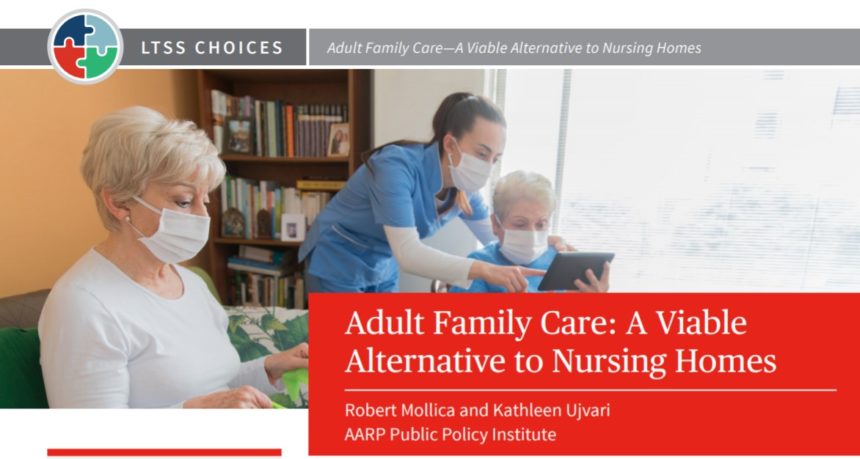
Several steps can make adult family care homes — regulated as assisted living in many states — more competitive with nursing homes, according to a new report from the AARP Public Policy Institute.
“These steps involve a closer examination of the licensing and oversight procedures, as well as the payment structures that allow consumers to access the LTSS needed in a small, homelike residential setting,” the authors wrote, noting that “[a]dult family care deserves a closer look by aging consumers looking for comfortable, supportive environments, and by policymakers and advocates seeing viable alternatives to nursing homes.”
Today, according to the report, 18 states license adult family care homes under assisted living regulations, and 38 states include such homes among their available long-term services and supports residential care options. Facilities licensed under assisted living rules typically are labeled assisted living homes or residences, residential care facilities, community residence facilities, personal care homes or family care homes.
The report describes the setting as a combination of housing and LTSS provided in a house or other small residential setting. There, residents receive assistance with activities of daily living and personal care as well as help with medications and other healthcare-related tasks.
Several states are concerned that the supply of adult family care home providers is limited and declining, however, the report authors noted. The number of adult family care providers in Florida, for instance, dropped from 491 in 2008 to 301 in 2020.
Reasons for the decline, according to the report, include lack of interest, declining health or personal needs of site managers, and landlords selling their homes. Low Medicaid reimbursement rates, difficulty finding support among state officials, and an exodus of providers into the assisted living market are other reasons cited for the decline.
Roadmap to success
Policies and procedures for adult family homes in Oregon and Washington offer a “roadmap” to success for other states, according to the report.
Oregon, for instance, has maintained a fairly steady number of adult family care homes by increasing reimbursement rates for serving Medicaid beneficiaries, hiring a full-time employee to work on recruitment, offering training sessions to improve quality and retain providers, and creating online training modules and self-training manuals to address the needs of rural providers.
Washington, according to the report, increased its supply of licensed adult family care providers by 19% from 2015 to 2020, with 89% of its 18,536 beds contracted to serve Medicaid beneficiaries. The state’s Aging and Long-Term Supports Administration implemented outreach and recruitment efforts to reduce provider turnover rates, the report said. Additionally, the state provides a one-day overview class to educate potential providers on expectations, as well as orientation and training sessions at six colleges.
“Revising reimbursement rates to encourage a willingness to serve Medicaid beneficiaries, stronger screening processes for potential providers, and consumer guides can help the advancement of successful, viable homelike care for those in need of LTSS,” the authors concluded.
Expansion recommendations
To expand the number of adult family care homes, the report authors recommend a focus on recruitment, screening and licensing; consumer awareness and resource tools; case management and provider resources; and financial assistance and reimbursement.
The authors also recommend specialized licensing to address the needs of special populations and residents with higher needs. Another recommendation is to recruit registered nurses to become adult family care providers.
Targeting financial assistance to adult family care providers and developing a tiered reimbursement rate system that varies provider payments based on residents’ needs are other tools to attract providers to the model, they said.




